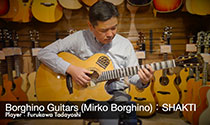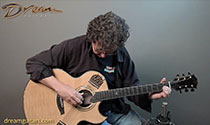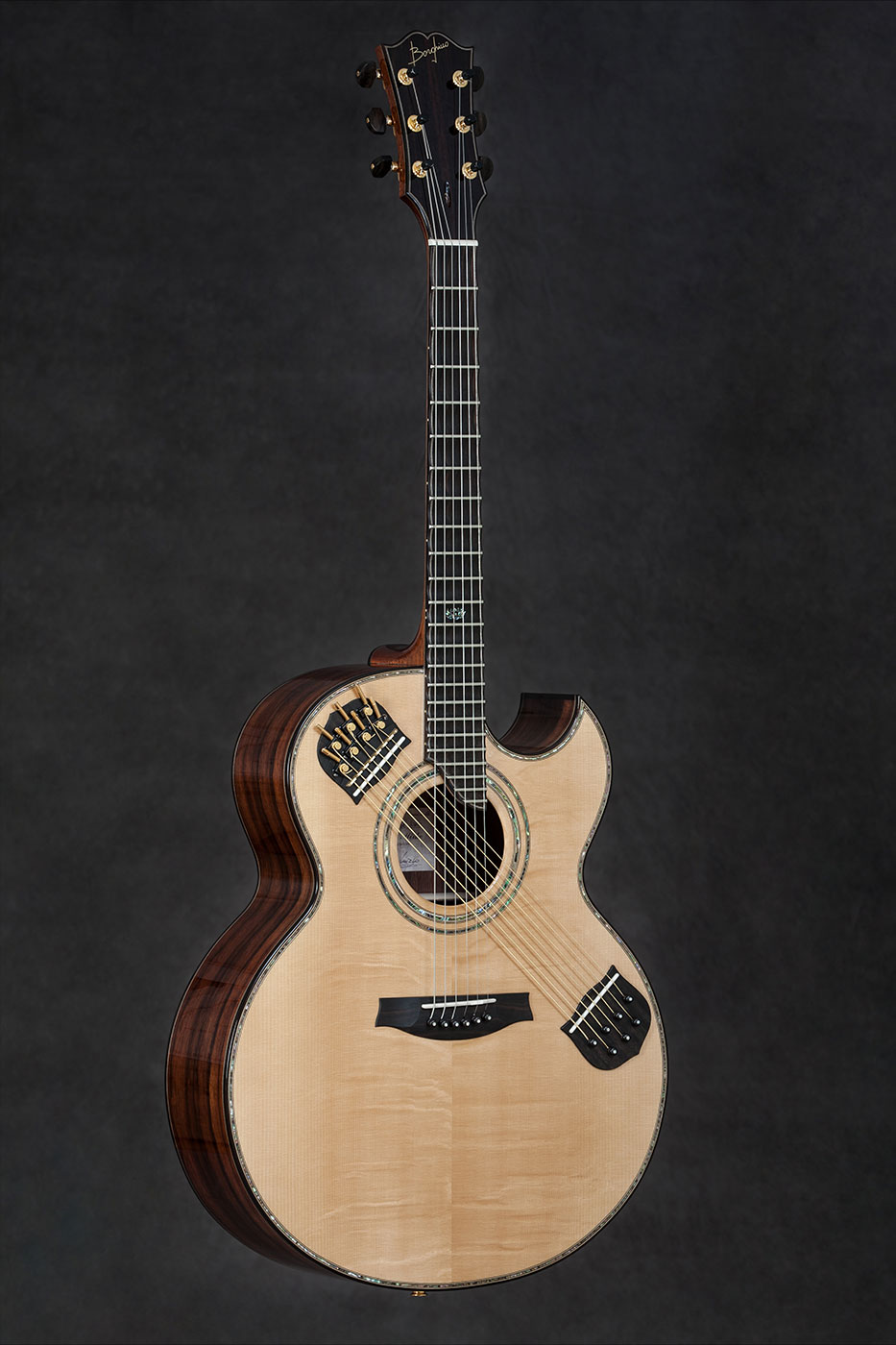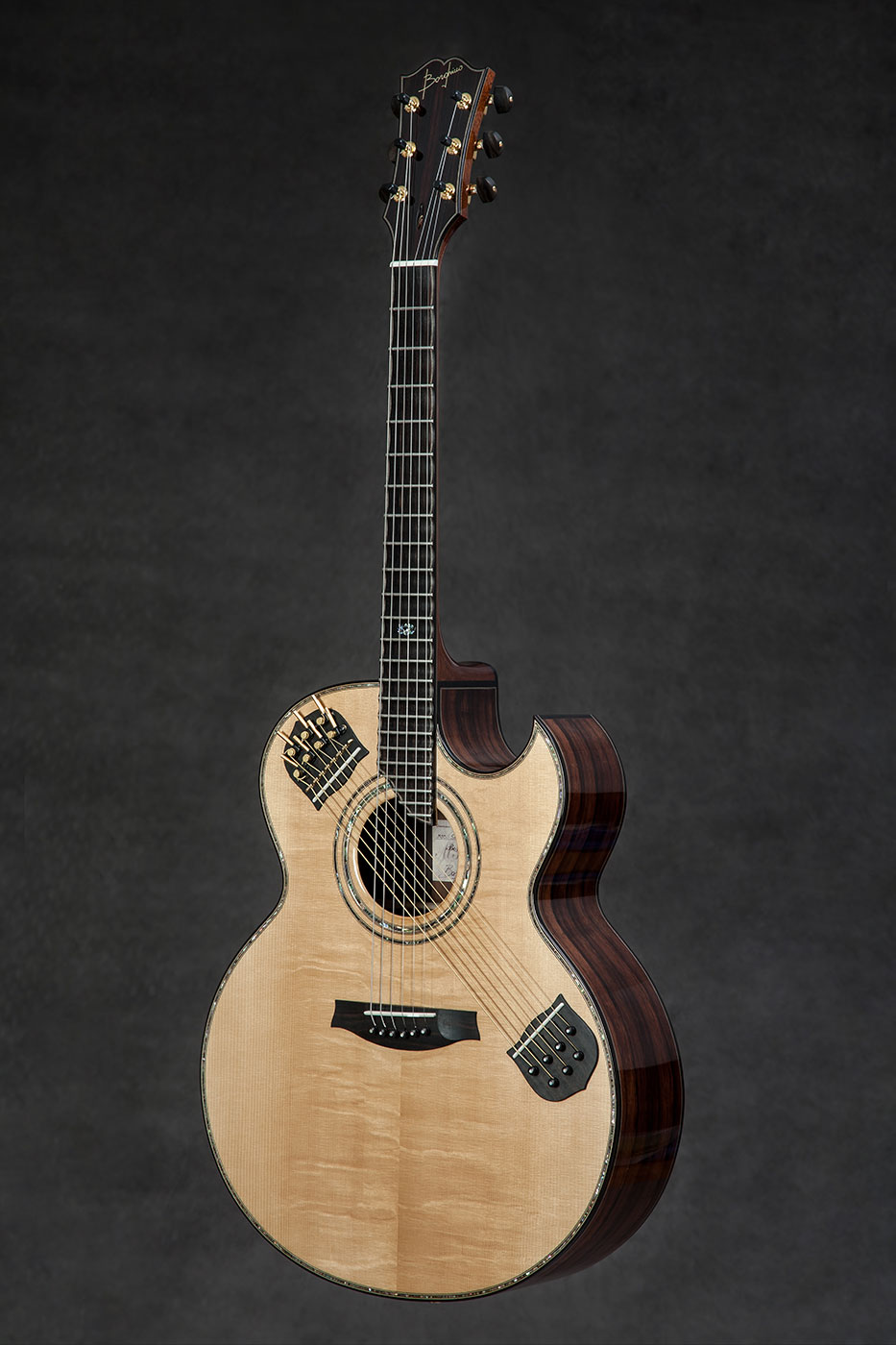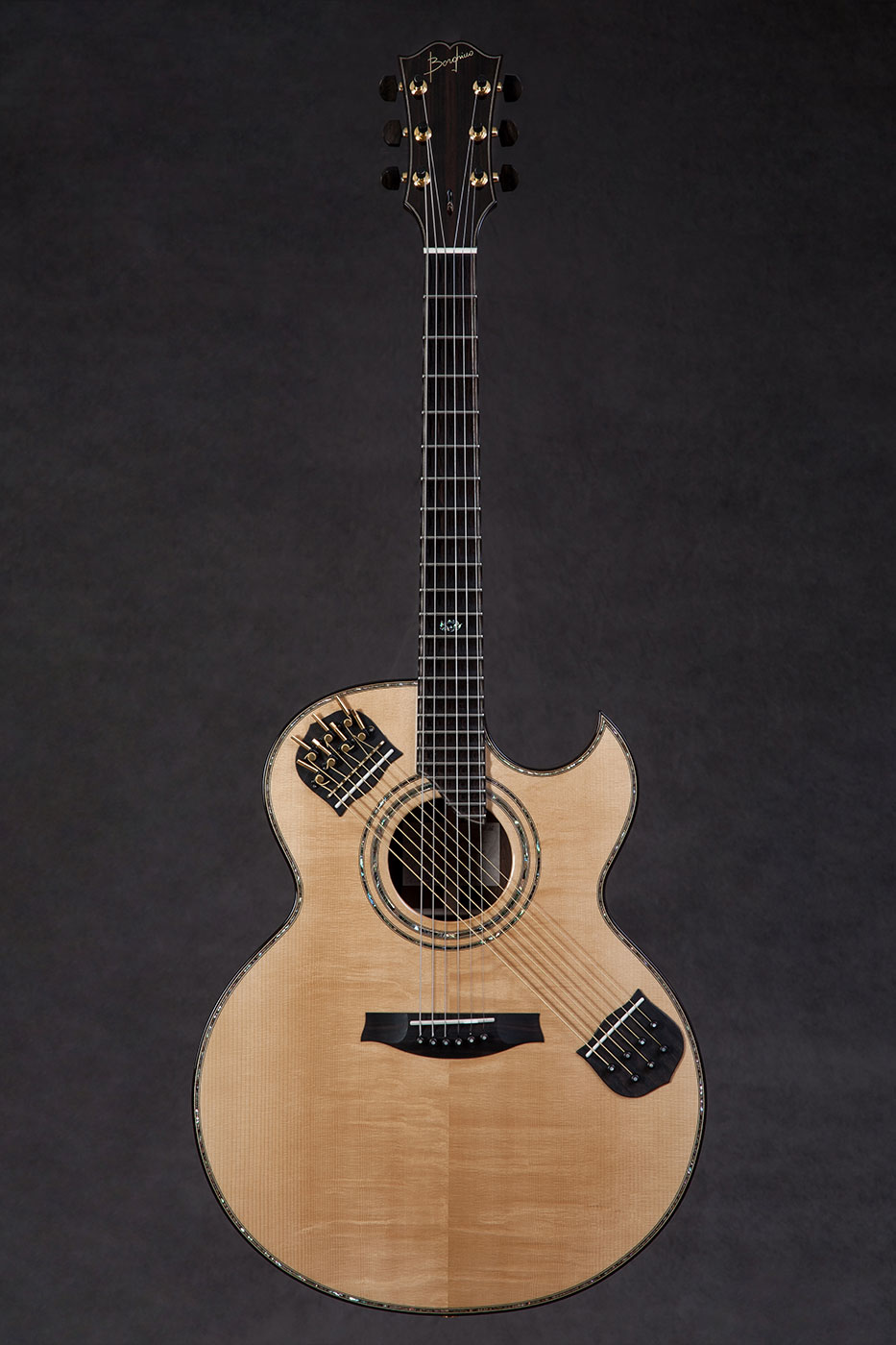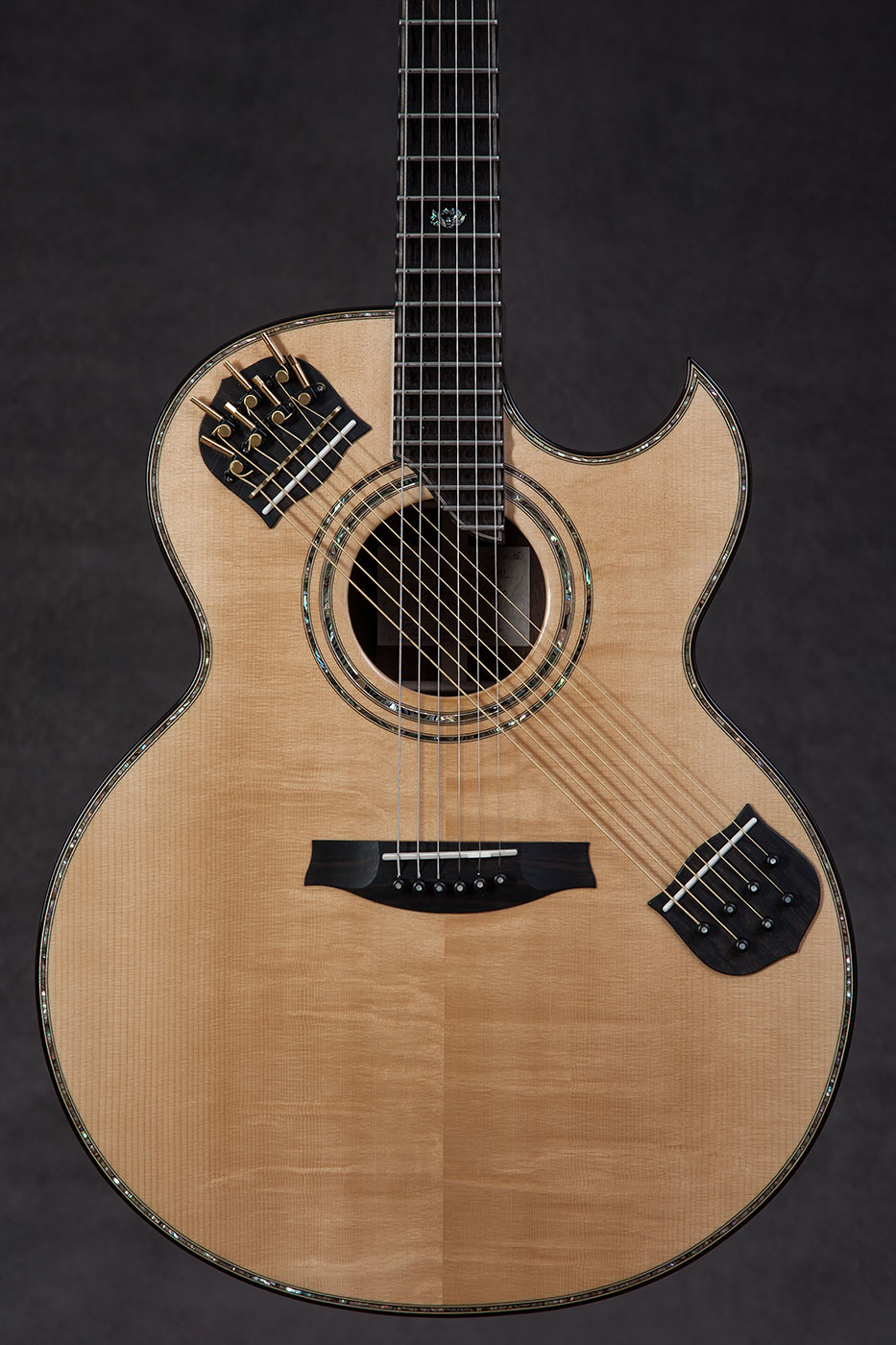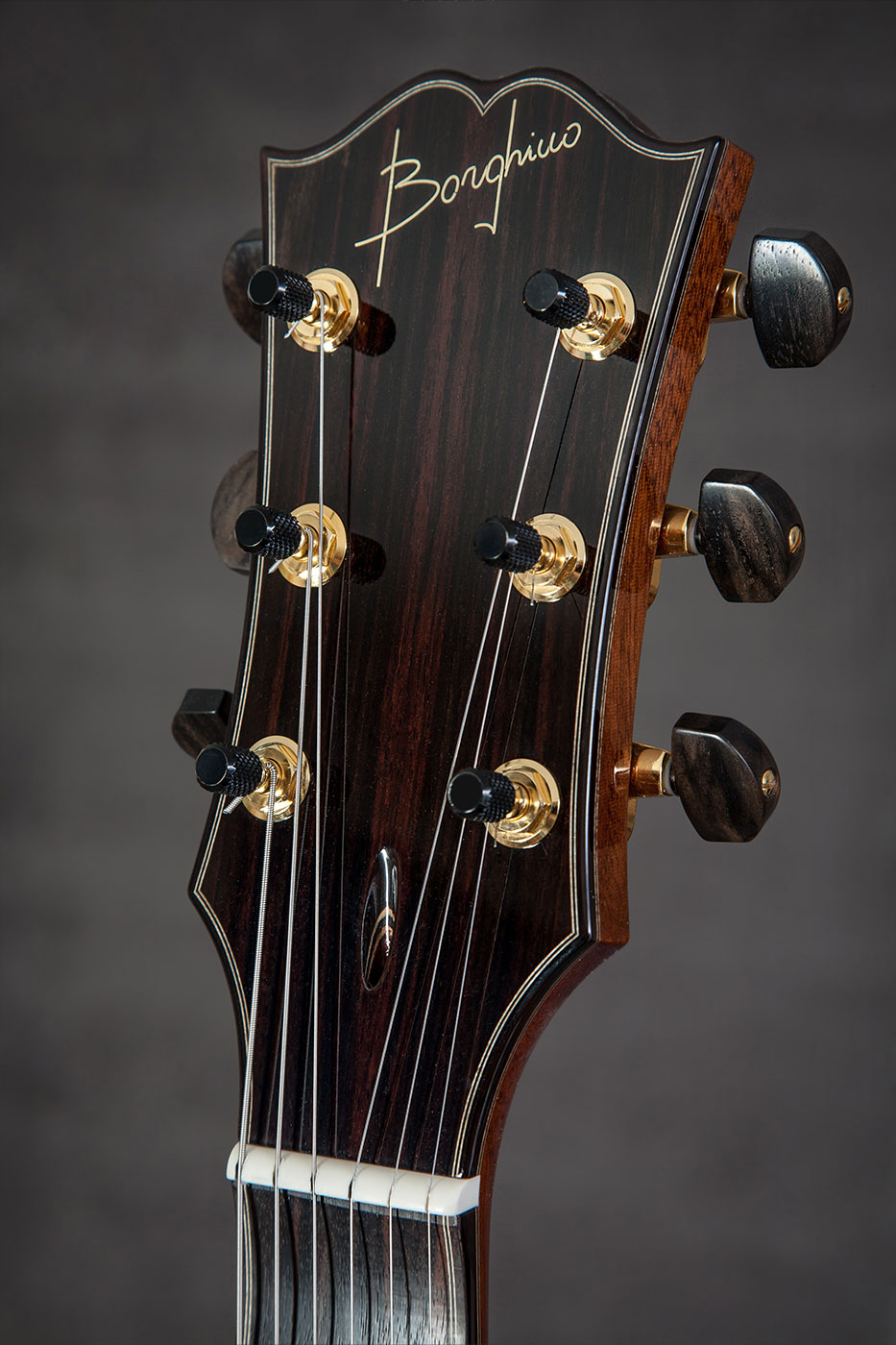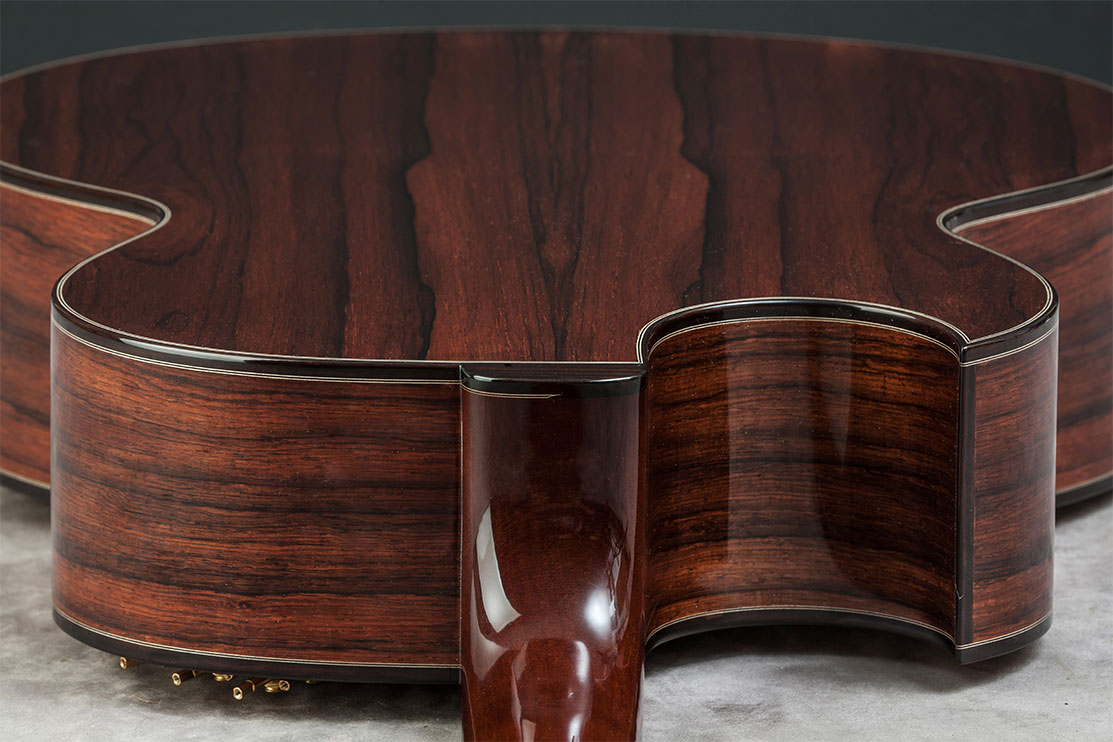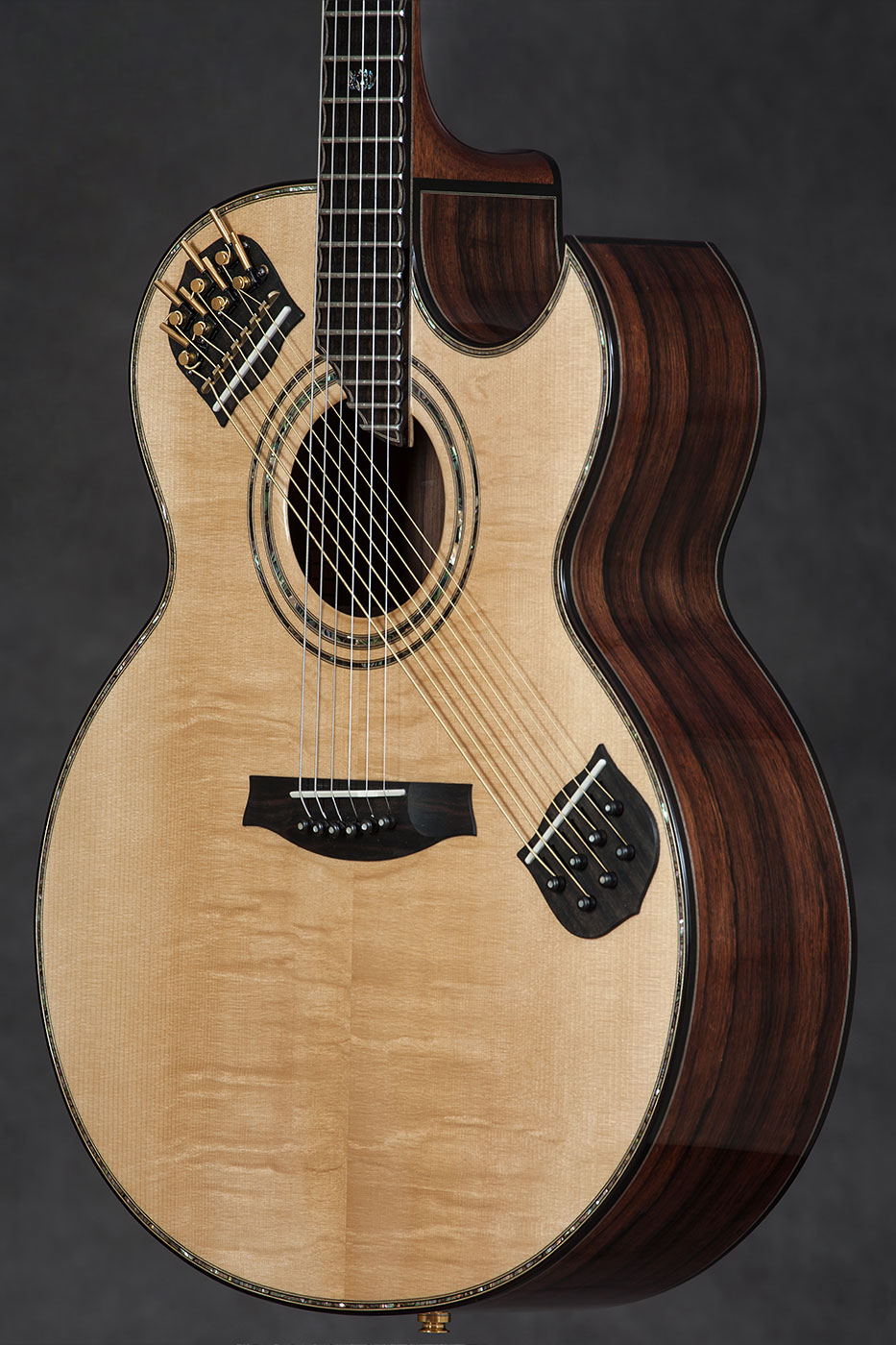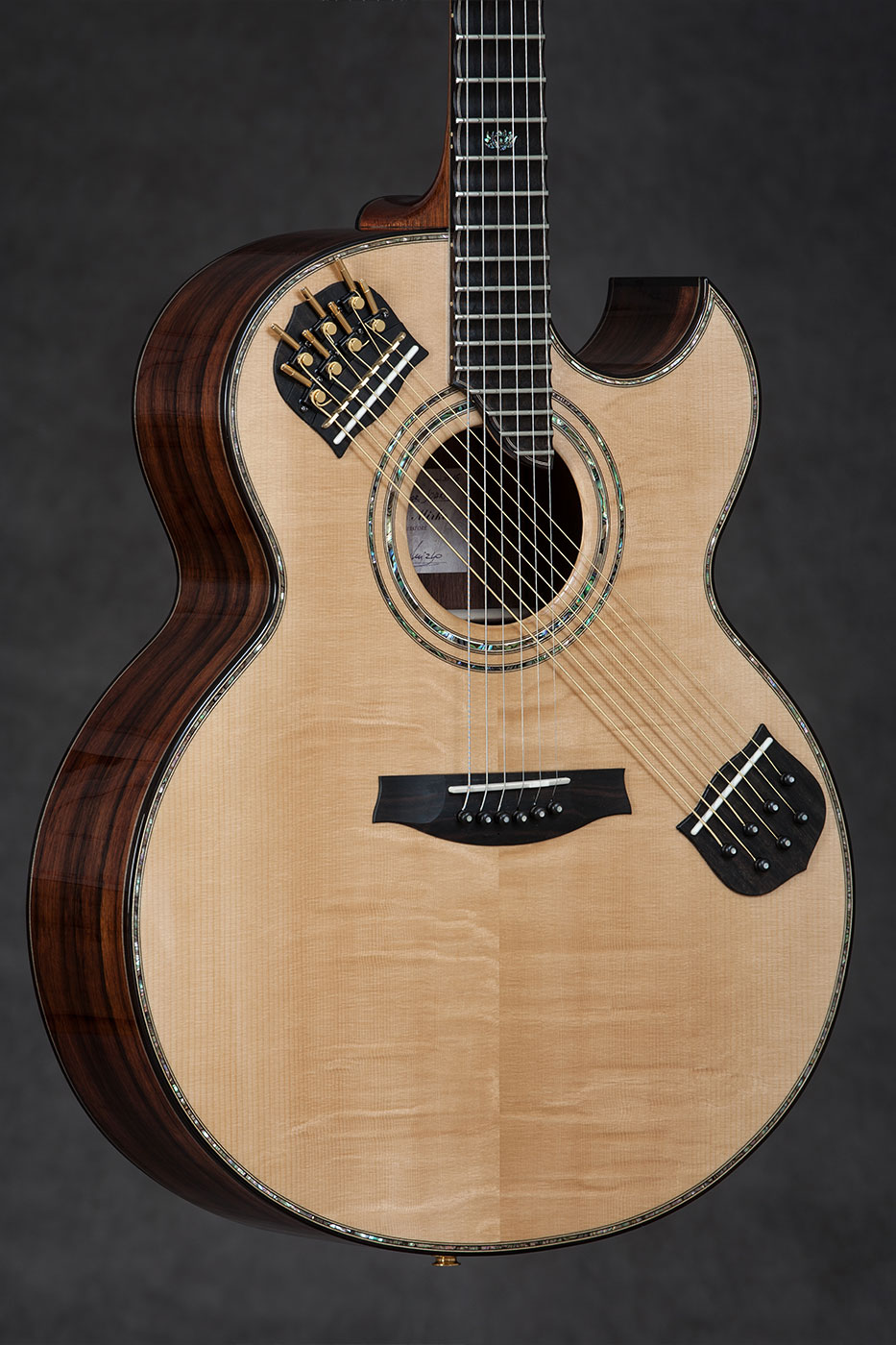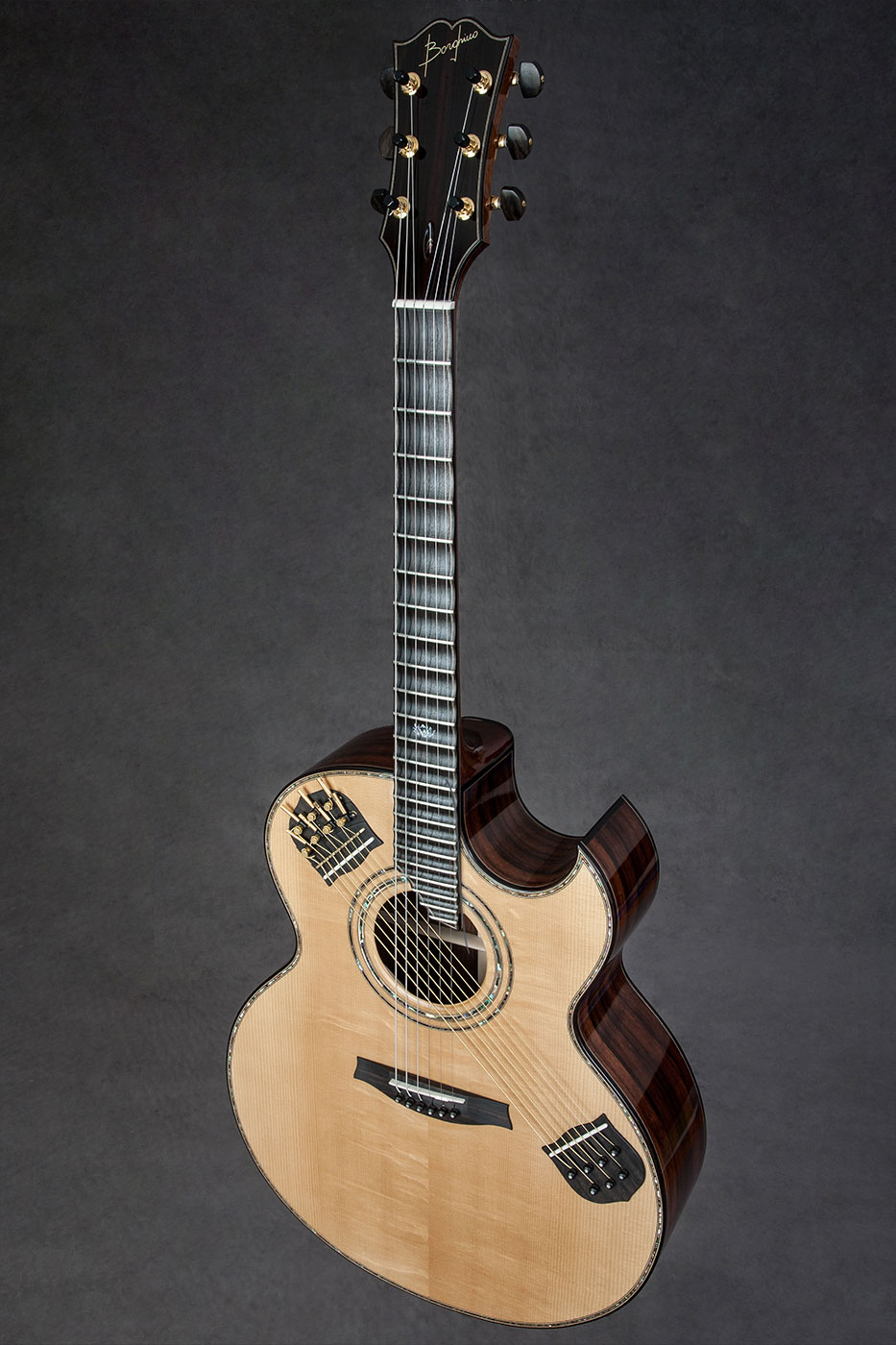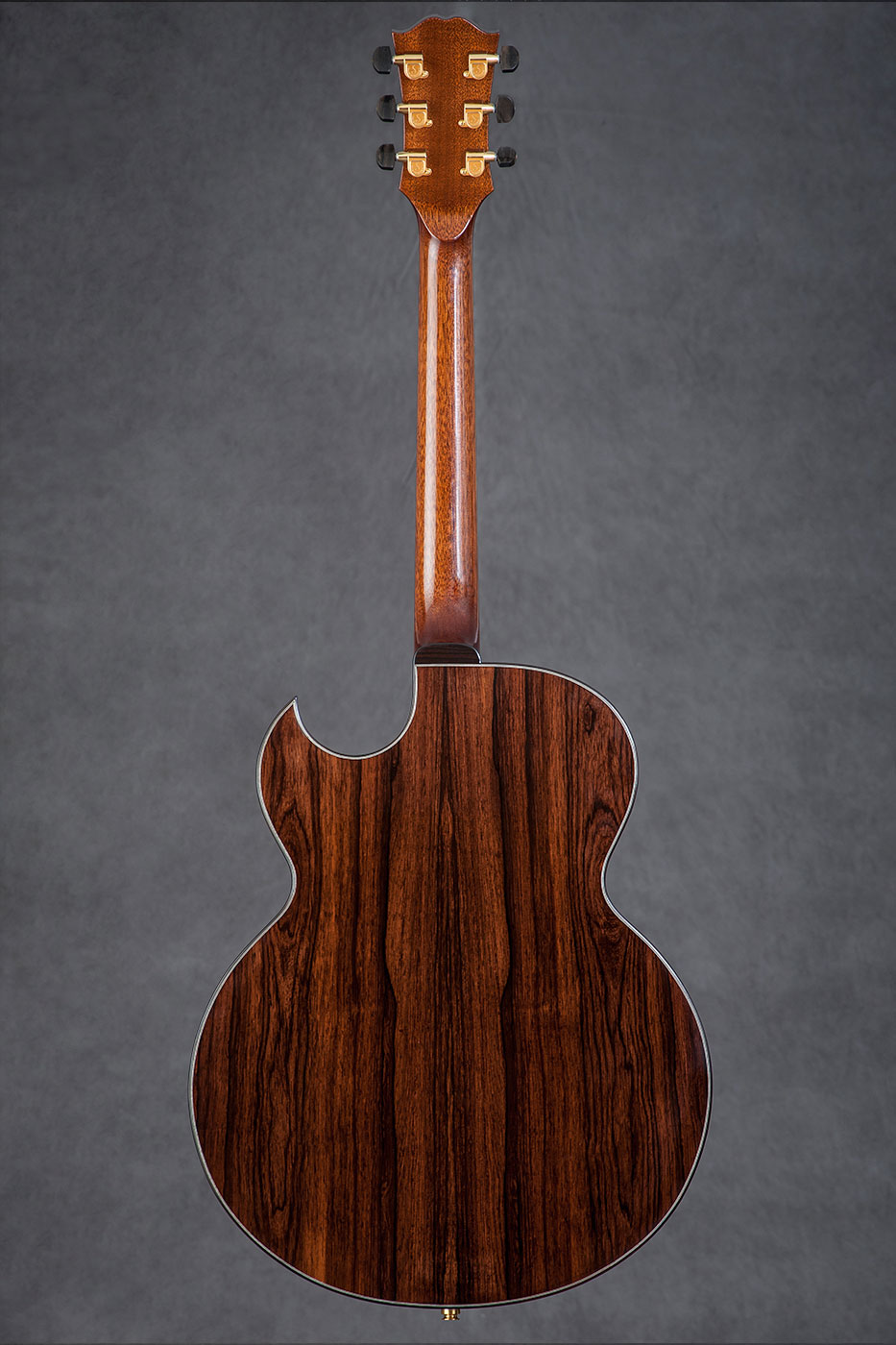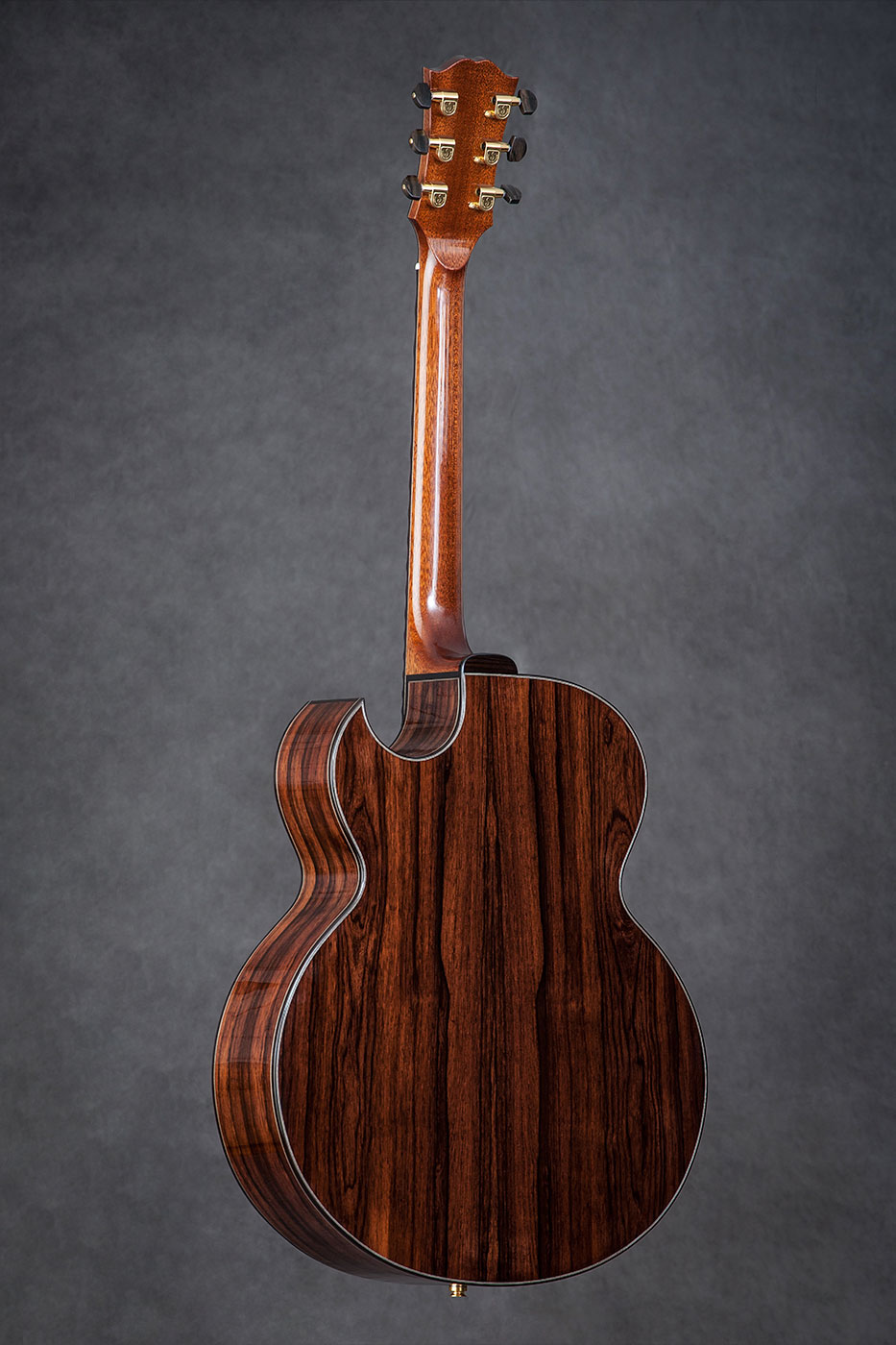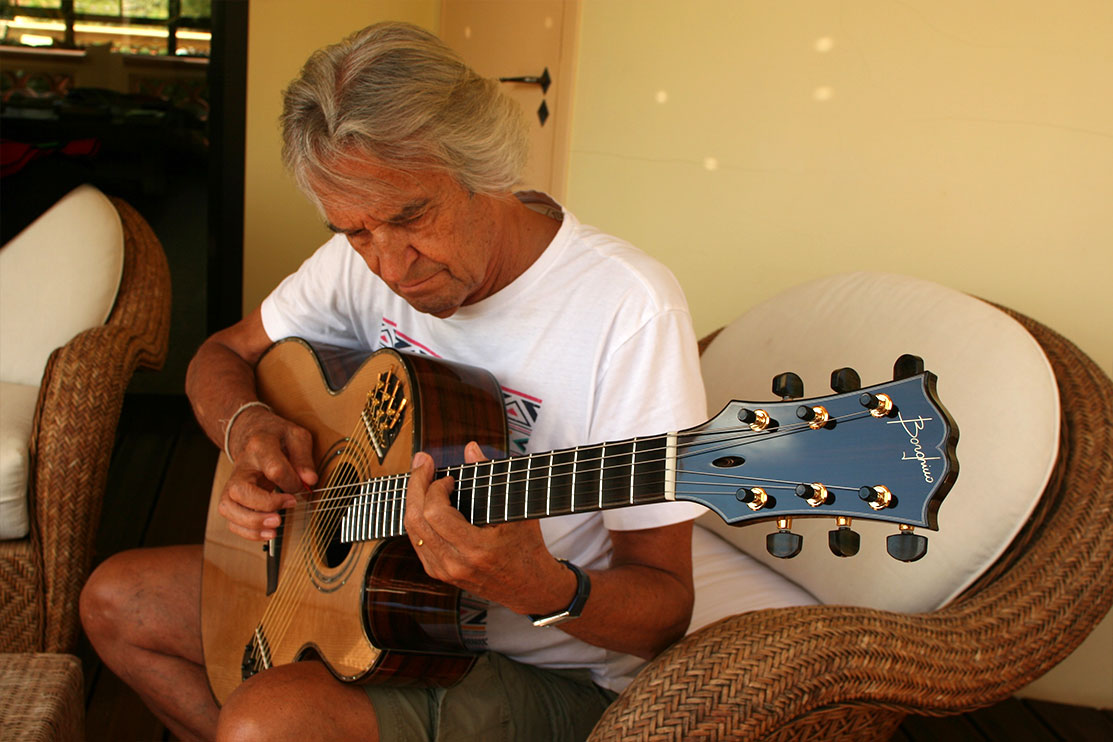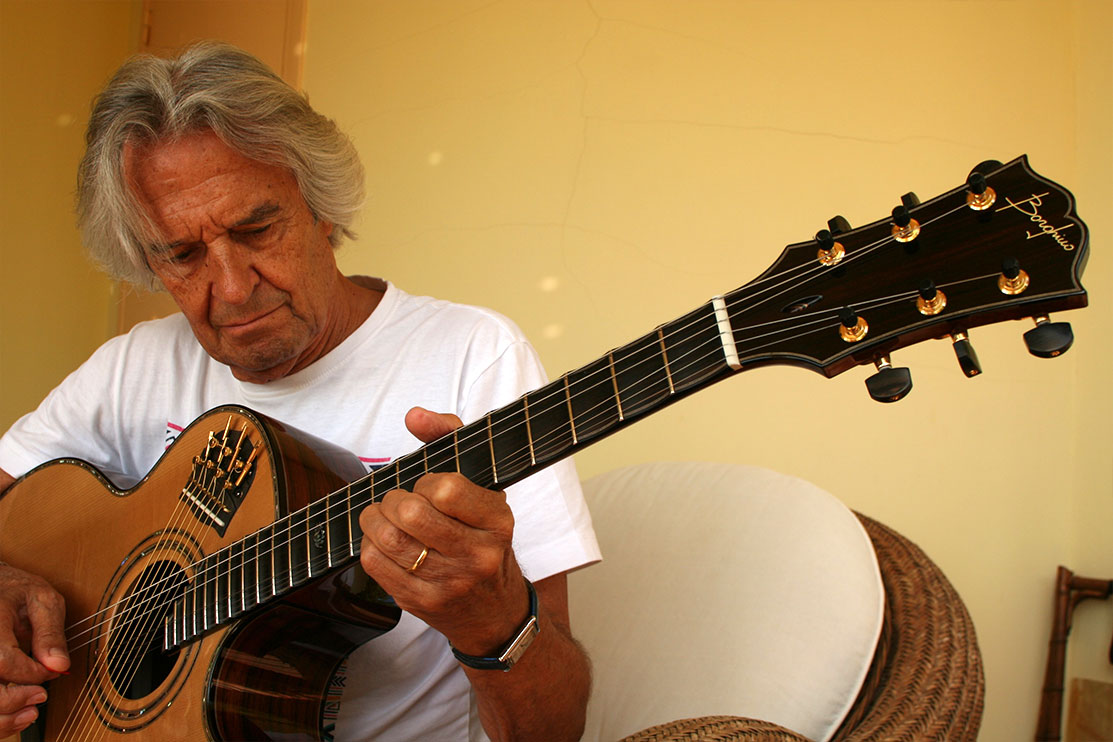Standard Specs
| Model | Shakti |
|---|---|
| Top | Italian bearclaw spruce |
| Back and sides | Madagascar rosewood |
| Neck | Mahogany |
| Scalloped fingerboard | Makassar Ebony |
| Binding | Makassar ebony |
| Purflings and rosette | Abalone |
| Amplification | Two different piezo K&K FantaStick undersaddle with a stereo exit |
| Tuning machines | 6 strings. Schaller M6a Gold with ebony button |
| 7 strings | Gotoh stealth |
| Scale length | 25.3” |
| Nut width | 45 mm |

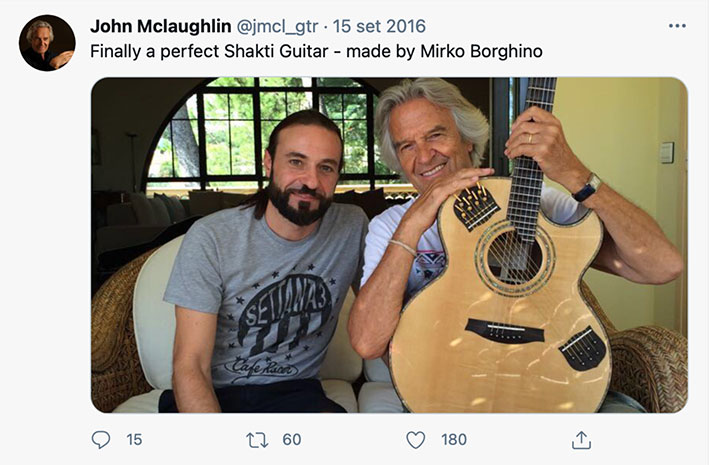
John declared:
"I’m extremely proud of Shakti because prior to it, there was very little collaboration between North and South Indian musicians. Shakti played a role in the reunification of the North and South in the musical sense. Since Shakti, the collaborations between North and South have grown a thousand times. We now have very regular North-South meetings. As far as Shakti’s influence on the Western ear, it’s difficult for me to estimate how and what kind of influence we had. We were very timely as far as we were concerned. And subsequently in the '80s, ethnic music and world music became much more popular. People began to seek out a new sound. The globalization of the world is part of the same process. The shrinking of the planet and increased intercommunication between countries and cultures has played a role too."
Shakti
The name John McLaughlin needs no introduction to music followers, especially jazz and fusion followers. Shakti is also the name of the band formed in 1974 by John McLaughlin.
Without a doubt, Shakti’s East-meets-West explorations that bridged jazz and Indian classical music played a pivotal role in establishing world music as a viable, potent force.
The idea for the Shakti Guitar struck McLaughlin early 1971 after he started learning Veena, a South-Indian stringed musical instrument, under Dr. S. Ramanathan, then a teacher of South Indian music at the University of Connecticut. When McLaughlin formed the fusion band Shakti with Zakir Hussain, L. Shankar and Vikku Vinayakram, he started looking for a Veena-like articulation in his guitar which led him to Abraham Wechter, a consulting luthier for Gibson guitars. In collaboration with the Gibson R&D team and helped by the ideas from the Sarod(a North-Indian stringed musical instrument) maestro Ustad Ali Akbar Khan, McLaughlin took his first Shakti guitar to stage for the Shakti concerts in the 1975-1976 timeframe.
Coming to what a Shakti guitar is all about, it mainly differs from the normal guitar in terms of its 13 strings, made up of seven drone strings in addition to the standard six. The seven sympathetic drone strings are placed beneath and diagonal to the standard ones. The drone strings can be strummed during the performance or left to vibrate for sympathy. Another innovation was the scalloped fingerboard, the area between the frets were shaped concavely similar to that of a Veena. This ensured that the fingertips didn’t touch the fretboard while playing. This allow the musician to bend Vertical the string without any friction but also push down the strings across frets letting him do both vertical and horizontal string bendings. What resulted from all this was a radically new sound that had never before been heard from a guitar.
The Shakti guitar was used extensively by McLaughlin during his Shakti concerts till late 1970s. In 1978 however the band got broken due to various reasons, and that unfortunately was the last that was seen of the Shakti guitar. In 1997 when the band was reincarnated as Remember Shakti, he could not use the Shakti guitar as it had been previously lent to a musician and was returned in a totally unusable condition. McLaughlin instead went for Gibson Johnny Smith, a hollow bodied acoustic-electric guitar that he had been playing in between. The Shakti guitar was not seen to return even in the subsequent concerts of Remember Shakti, the last one being in 2007.
Only in 2016 The Italian Luthier Borghino Mirko Made for John a new model of Shakti taking advantage of his experience in several kind of instruments. Mirko have spent a couple of years studying how to improve the iconic guitar leaving untouched his soul but getting it better. A new Bracing pattern that guarantees a good ratio between the sound of the standard strings and the drone strings, either unplugged and plugged in, one innovative way to hold and tune the seven drone strings, the complete removal of any plastic parts leaving its place to a rare and stunning wood, and a flawless realization are the main improvement that have make John say "Finally a perfect Shakti Guitar”
The idea for the Shakti Guitar struck McLaughlin early 1971 after he started learning Veena, a South-Indian stringed musical instrument, under Dr. S. Ramanathan, then a teacher of South Indian music at the University of Connecticut. When McLaughlin formed the fusion band Shakti with Zakir Hussain, L. Shankar and Vikku Vinayakram, he started looking for a Veena-like articulation in his guitar which led him to Abraham Wechter, a consulting luthier for Gibson guitars. In collaboration with the Gibson R&D team and helped by the ideas from the Sarod(a North-Indian stringed musical instrument) maestro Ustad Ali Akbar Khan, McLaughlin took his first Shakti guitar to stage for the Shakti concerts in the 1975-1976 timeframe.
Coming to what a Shakti guitar is all about, it mainly differs from the normal guitar in terms of its 13 strings, made up of seven drone strings in addition to the standard six. The seven sympathetic drone strings are placed beneath and diagonal to the standard ones. The drone strings can be strummed during the performance or left to vibrate for sympathy. Another innovation was the scalloped fingerboard, the area between the frets were shaped concavely similar to that of a Veena. This ensured that the fingertips didn’t touch the fretboard while playing. This allow the musician to bend Vertical the string without any friction but also push down the strings across frets letting him do both vertical and horizontal string bendings. What resulted from all this was a radically new sound that had never before been heard from a guitar.
The Shakti guitar was used extensively by McLaughlin during his Shakti concerts till late 1970s. In 1978 however the band got broken due to various reasons, and that unfortunately was the last that was seen of the Shakti guitar. In 1997 when the band was reincarnated as Remember Shakti, he could not use the Shakti guitar as it had been previously lent to a musician and was returned in a totally unusable condition. McLaughlin instead went for Gibson Johnny Smith, a hollow bodied acoustic-electric guitar that he had been playing in between. The Shakti guitar was not seen to return even in the subsequent concerts of Remember Shakti, the last one being in 2007.
Only in 2016 The Italian Luthier Borghino Mirko Made for John a new model of Shakti taking advantage of his experience in several kind of instruments. Mirko have spent a couple of years studying how to improve the iconic guitar leaving untouched his soul but getting it better. A new Bracing pattern that guarantees a good ratio between the sound of the standard strings and the drone strings, either unplugged and plugged in, one innovative way to hold and tune the seven drone strings, the complete removal of any plastic parts leaving its place to a rare and stunning wood, and a flawless realization are the main improvement that have make John say "Finally a perfect Shakti Guitar”
